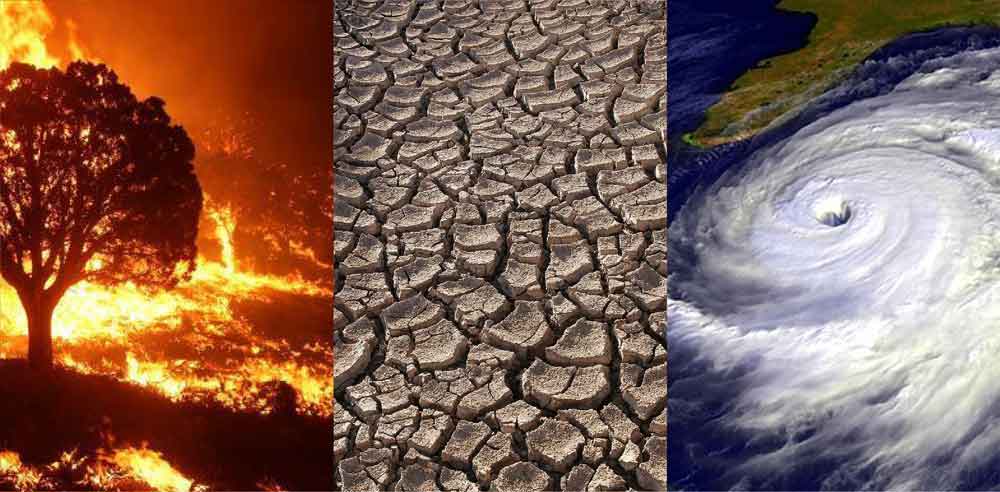
Climate change in 2023 and the years to come is expected to get worse. There is a 93% chance that one of the years between 2022 and 2026 will be the warmest year to date. Climate change is negatively affecting the temperature, wildlife, ecosystems and natural resources that human life depends on for survival.
A new study by James Hansen and a global team of researchers indicates that world is likely to surpass the 1.5°C threshold within this decade itself. This conclusion sound alarm to the negotiators at the upcoming Climate Summit (COP28) in Dubai from November 30th to December 12th. This environmental treaty being a pivotal global predicament, need for all countries to set goals to reduce their carbon emissions immediately. A big mistake of our scientific community is their unable to convince the world political leaders about what the actual climate crisis is now.
As the earth keeps warming and the frequency of natural disasters increases, the world is still expecting something positive from this Dubai summit and the previous COPs were not at all to peoples expectation. According to the United Nations Environmental Program, the planet has already experienced a temperature rise of nearly 1.2°C compared to pre-industrial levels and a doubling of atmospheric carbon dioxide is sure for 3°C by 2100.
Now the warming to below 2, not even 1.5°C, by the end of the century seems more unfeasible than ever. The target, adopted by 196 parties at COP21 in Paris on December 12, 2015 which the world took as the most vital global climate agreement to date necessitating to decline GHG as soon as possible. Nevertheless, global CO2 emissions is continuously rising excepting 2020 as a result of the COVID-19 pandemic.
Since 2022 onwards, CO2 emissions is growing. Russia-Ukraine and West Asia wars gave to global shortages in crude and natural gas and forcing to shift back to coal. As per IPCC, from a climate data, derived from sources like ice cores and tree rings, it has predicted to a higher estimate of around 4.8°C by 2100. The journal, Nature suggested that there is a 50% chance of limiting warming to 1.5°C, if the world could achieve net-zero emissions by 2034, significantly ahead of the 2050 global target.
CO2 emissions in high-income economies is luxury emissions and those in poorer economies are mainly subsistence emissions. Furthermore, the world’s richest 10 percent are responsible for a third of global emissions. Achieving global climate justice is to reduce emissions by the world’s richer population. For CO2 emissions, China, 31% is the largest emitter in the world, followed by the United States and India at 14% and 7.2% respectively.
The 1.5°C target is practically dead and the Paris Agreement has become non-binding. Despite the previous COPs, pledging to achieve net-zero emissions and forecasts to reduce in global coal, oil and gas demand, many governments still planned to set to increase their coal production through 2030 and oil and gas production until at least 2050.
The UN Secretary-General’s launch of the ’Early Warnings for All’ initiative also put vulnerable countries in focus at COP27. The initiative aims to ensure that every person on the planet is protected by disaster forecasting, preparedness and response in the next five years.
World companies can contribute to global net-zero target by purchasing carbon credits to counterbalance their own emissions but they don’t get down to the root of the problem. The biggest thing that nations, stakeholders and individuals around the world alike can do is strive to be more climate positive instead of merely joining the movement of net-zero emissions by reducing their own carbon footprint. All in all, climate change in 2023 isn’t looking great– but there are still a plethora of opportunities for global leaders and countries.
Since climate change began, several new technologies have been developed like carbon capture and storage systems. These machines strive to mitigate further carbon dioxide or greenhouse gas emissions from entering the atmosphere and help to combat climate change. As revolutionary as this is, the environmental damage made to the problem isn’t reversible.
Many animals have been left with no choice but to flee their natural habitats. Also, climate change has affected plants, trees, and flowers – as they are no longer following their natural life cycles due to these spontaneous shifts in weather patterns.
It is clearer than ever that climate change interwoven with other great world crises, it’s no longer a bogeyman of the future. Climate impacts are causing harm to everyone. Net zero will have to be reformed so that incumbents do not plan to ‘net off’ their emissions. The focus must be on emissions reductions close to a zero emissions. That requires the world leaders to be honest and provide the genuine services for the mankind with coherent and unified plans; otherwise we all are dead.
N. Munal Meitei
Environmentalist, email – nmunall@yahoo.in












+ There are no comments
Add yours